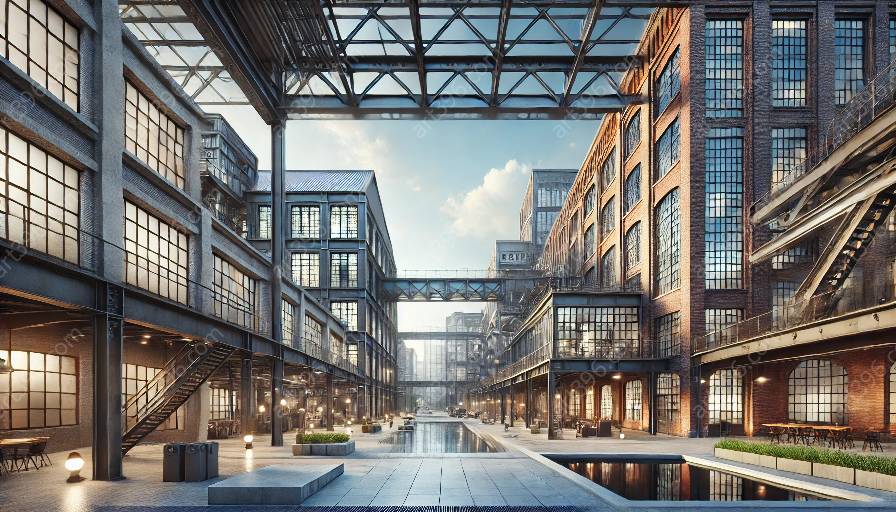Industrial architecture plays a critical role in supporting efficient workflow and operations in manufacturing and industrial facilities. From layout and spatial design to material selection and sustainability, architectural elements greatly influence the productivity and functionality of industrial spaces.
The Importance of Industrial Architecture in Efficiency and Operations
Industrial architecture is not solely about the aesthetics of a building; it encompasses the integration of design and function to create spaces that facilitate efficient operations and workflow. Design elements, such as layout, circulation, and spatial organization, are carefully planned to optimize the movement of materials, equipment, and personnel within the facility. By incorporating ergonomic principles, industrial architects create environments that improve productivity and reduce operational bottlenecks.
Optimizing Layout and Spatial Design
The layout and spatial design of industrial facilities directly impact workflow efficiency. Architects utilize a strategic approach to design floor plans and spatial arrangements that minimize unnecessary movement and streamline processes. This can involve creating designated zones for specific functions, optimizing the placement of machinery and workstations, and ensuring smooth material flow from raw material intake to finished product storage.
Material Selection and Functional Integration
Industrial architecture also focuses on the selection of materials and their functional integration within the facility. From durable flooring and high-strength structural components to energy-efficient building envelopes, material choices play a critical role in supporting the operational needs of the facility. Architects carefully consider the durability, maintenance requirements, and suitability of materials to ensure they align with the demands of the industrial environment.
Integration of Technology and Sustainability
Modern industrial architecture emphasizes the seamless integration of technology and sustainability to enhance operational efficiency. This can include the incorporation of smart building systems, IoT (Internet of Things) devices, and renewable energy solutions, all aimed at optimizing energy usage, monitoring equipment performance, and reducing environmental impact. By leveraging sustainable design principles, industrial architecture contributes to the creation of energy-efficient and environmentally responsible industrial facilities.
Adaptability and Future-Proofing
Efficient industrial architecture is designed with adaptability and future-proofing in mind. Flexibility in design allows facilities to accommodate changes in production processes and technological advancements without major structural alterations. By incorporating modular design strategies and flexible layouts, industrial architects ensure that the facility can evolve in tandem with the changing needs of the industry.
Enhanced Safety and Compliance
Industrial architecture prioritizes safety and regulatory compliance, integrating design features that mitigate workplace hazards and adhere to industry-specific regulations. From fire safety measures and emergency egress routes to compliance with building codes and standards, architectural design elements contribute to creating a safe and secure working environment, supporting smooth and uninterrupted operations.
Conclusion
Industrial architecture design serves as a cornerstone for creating industrial facilities that promote efficiency, productivity, and operational excellence. By optimizing layout, material selection, technology integration, and safety, industrial architects play a vital role in shaping spaces that facilitate streamlined workflow and support the operational needs of manufacturing and industrial operations.





























































